
VANUATU
Best kept secret
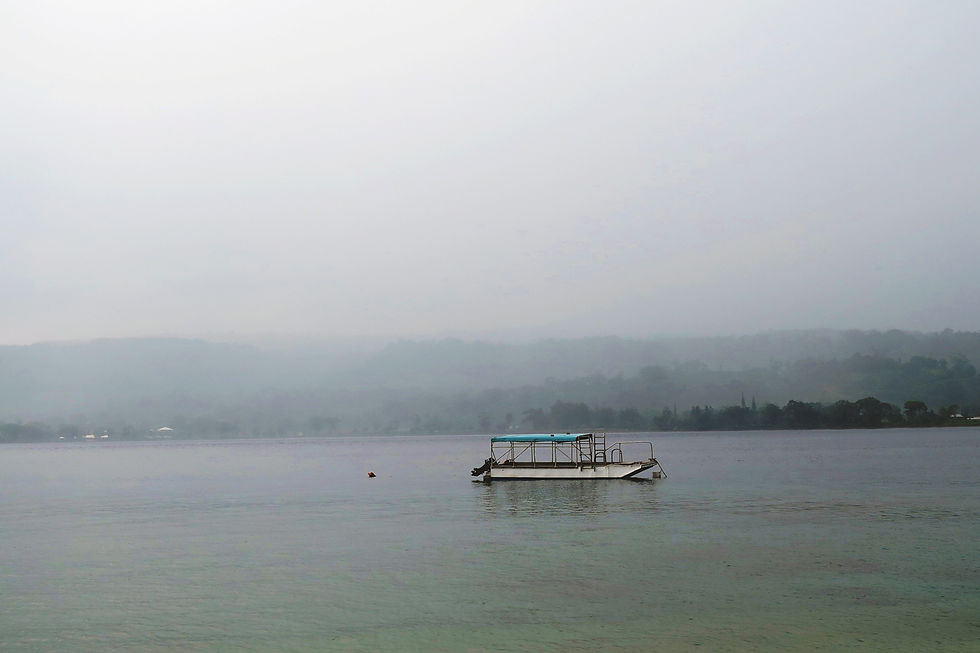
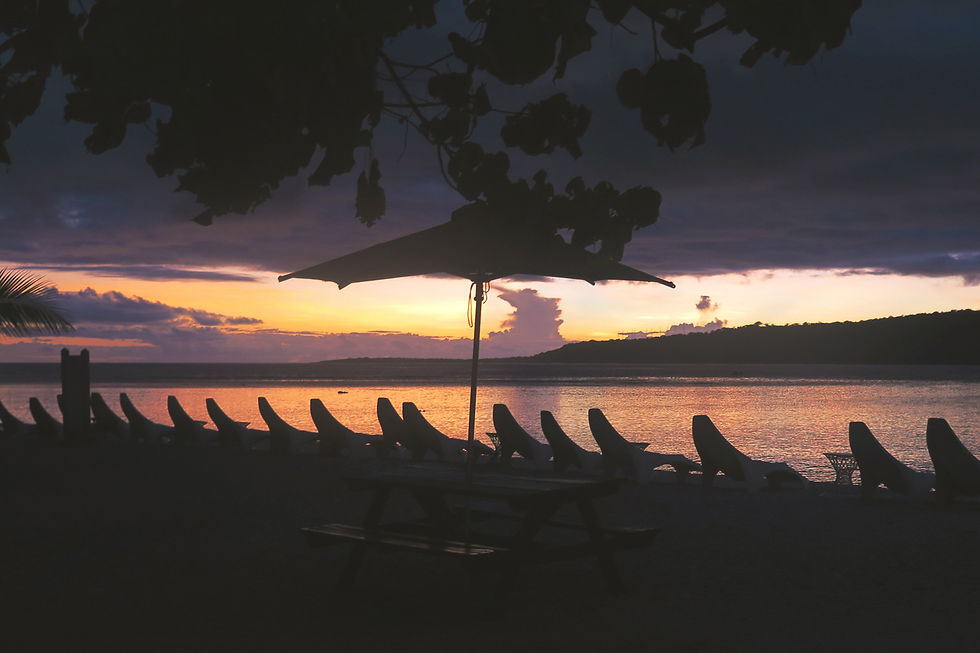


Vanua-what? If you do not live in Oceania, chances are the name does not ring a bell. Apart from disastrous cyclones, Vanuatu barely ever gets international coverage. They do not have a strong, Olympic-winning rugby team like their neighbours in Fiji. They do not have a honeymoon destination like Bora Bora in French Polynesia. The islands are so small that you might not even see them on the map when looking at New Zealand. To be completely honest with you, when I added Vanuatu to my round-the-world trip itinerary, I did not know all that much about the islands either. But once I heard that you can travel to an active volcano there and stand within 150m of the crater rim, I was sold.
Mt Yasur is one of the three things that Vanuatu usually gets its 15 minutes of fame from, the other two being a land diving tradition and high scores on the happiness indexes. Well, if I were a tropical island in the middle of the ocean, I would not bother to get the world's attention either - everything you need is already on your doorstep. Located thousands of kilometres away from everybody else, Ni-Vanuatu, citizens of and indigenous people from Vanuatu, are untouched by and indifferent to the troubles of the world. Most of their visitors come and go with Australian cruise ships not creating too much disturbance or leaving much of an impact on the local lifestyle that has hardly changed over some 3,000 years. It is not a place to go if you want to indulge in 5-star luxury. Vanuatu calls for a sense of adventure, so if you are looking for a less-developed (in the western, capitalist sense of this word) but more authentic destination and geniune cultural experience - you are in for a treat.
Yet when I arrived, my first impulse was to go lay on the beach and do absolutely nothing for a moment. I had just spent almost a month travelling around all of New Zealand by bus, which meant going to so many places and seeing so many things in a very cramped timeframe. So I landed in Port Vila and headed straight to my accommodation on Mele Island, an islet just about 15 min away from the airport. The island is owned by the local Mele villagers but is on lease to Hideaway Island Resort. It is a community-friendly place, and employment at Hideaway is the main source of income for some 50 local families; a percentage of our turnover is paid to a village fund for the benefit of the community.
The resort itself is quite simple, it houses a simple Melanesian style beachfront bar and restaurant (free breakfast!), a pool, bungalows, and a water-activity office where you can get snorkelling and scuba diving gear. I booked a four-person dorm but got upgraded to a private room due to construction works. Now, that's what I call a travel luxury.
Hideaway Island turned out to be exactly what I needed. The clear turquoise waters around have been declared a marine sanctuary and are full of marine life, coral reefs, and tropical fish. Needless to say, snorkelling here is some of the best I have ever experienced and you can even combine with a visit to a post office. Yup, you read that right. The world's very first underwater post office is situated about 50 metres from the shore and 3 metres under the sea. All you need to do is buy a special waterproof postcard from the souvenir shop right there, sign it with pencil and drop into the assigned postbox. The postcards are collected daily by dive masters from the island and taken on to postal services on the surface to be sent locally and internationally. I sent one to my parents in Siberia and they received it about 3 weeks later, how impressive it that? Whoever came up with that idea is a genius.

January - February 2015
TYPE OF TRIP
- Backpacking
- Round-the-world
- Solo travel
ROUTE
Auckland, New Zealand - Hideaway Island (Efate Island) - Port Vila (Efate Island) - Tanna Island - Efate Island - Nouméa, New Caledonia
TRIVIA
- Number of islands: 83
- Capital city: Port Vila
- Population: 243,000
- Official languages: Bislama, English, French
VANUATU TODAY
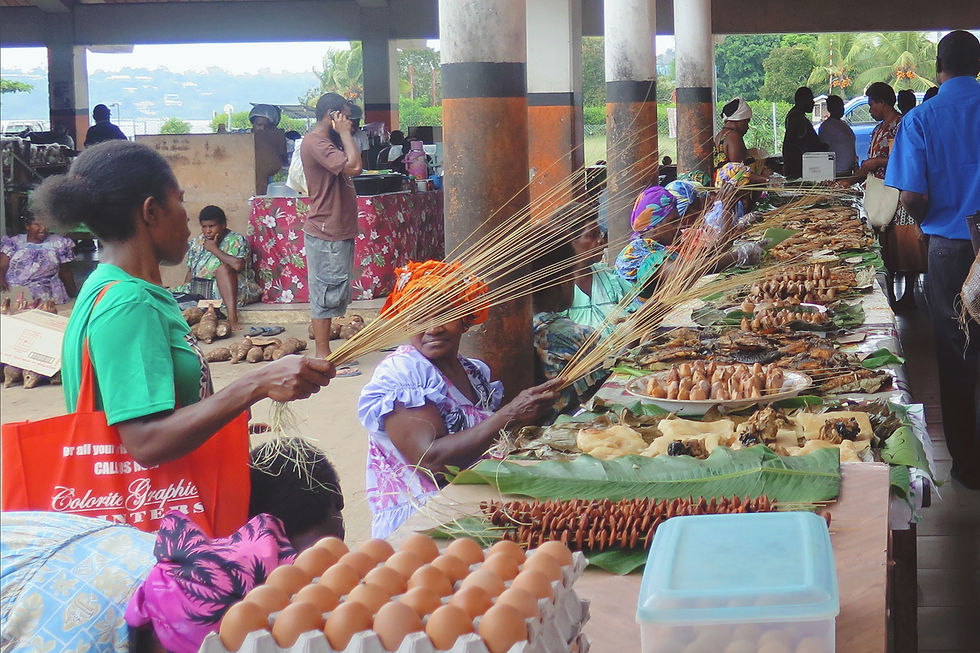
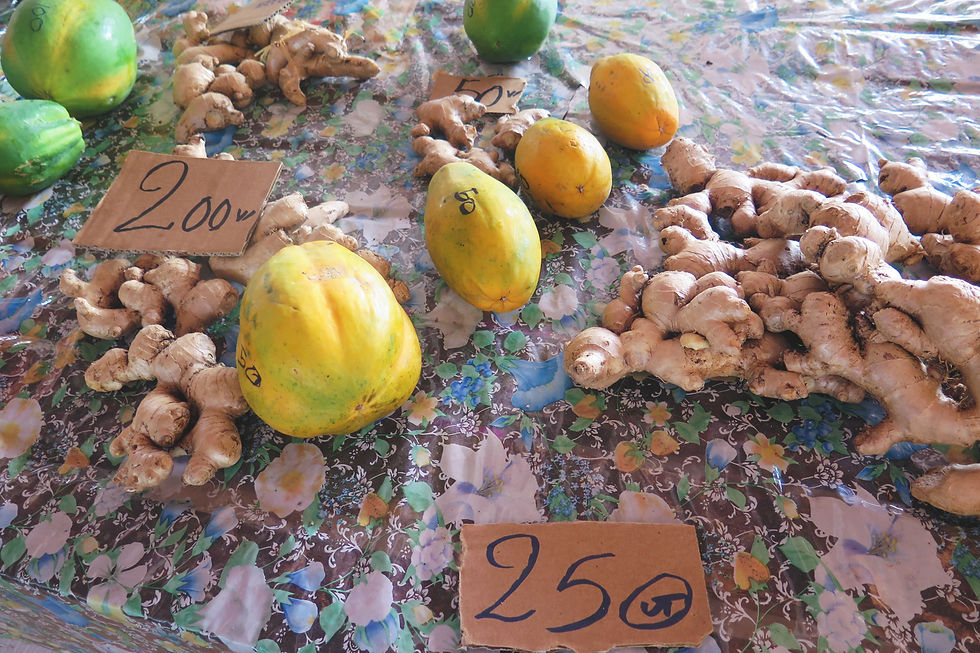
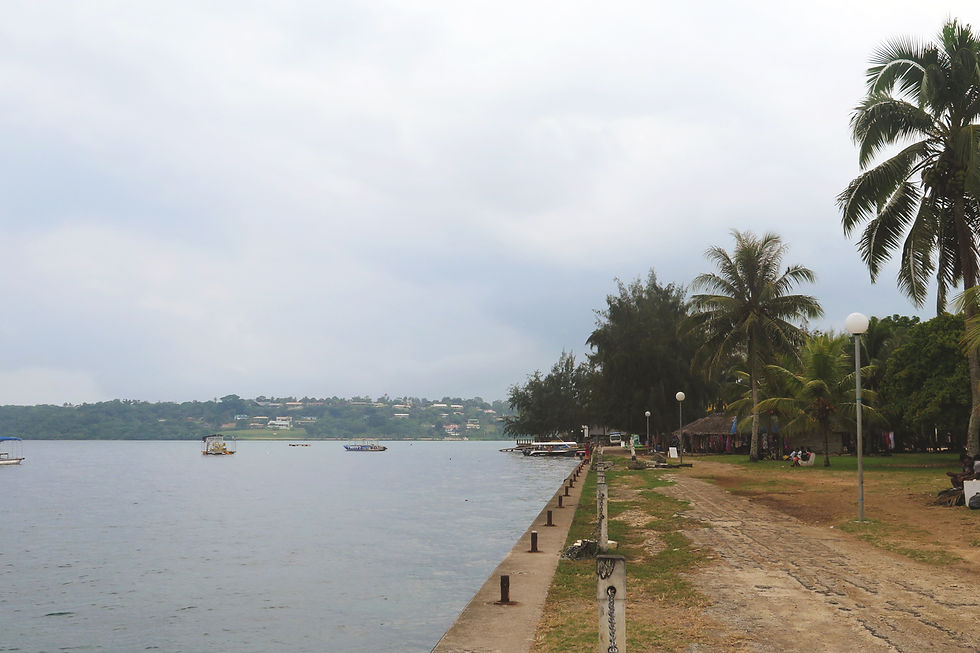

I only had six days in Vanuatu, so the next day I went out to explore Port Vila. Getting around the capital and the island of Efate is easy and pretty cheap. You can either take a bus or taxi - they won't cost more than a couple of dollars. Mind you, driving these muddy roads feels like riding rollercoasters.
Taking a cab is also likely to be an experience of its own: local cab drivers are very friendly and will make excellent travel guides if you let them by asking questions. Thanks to them, I learned that the average Ni-Vanuatu speaks 4 languages: English, French, Bislama, and the language of their native village. Bislama is a Melanesian Pidgin developed at the end of the 19th century when thousands of Vanuatu people were sent to work on plantations in Australia and Fiji. Coming from islands that each had their own vernaculars, they ended up speaking a form of pidgin English that combines a typically Melanesian grammar with a primarily English vocabulary. It looks and sounds pretty funny to an English-speaking person: for instance, tank u tu mas is 'thank you' and hem i dring kava is 'he drinks kava'. Even today Bislama remains a second language for most of the population. Vanuatu is linguistically diverse: approximately 113 languages are spoken on these 83 islands. The majority of people grow up speaking native village languages and only later learn Bislama, however, education is only available in English or French. So, while Bislama is essentially the lingua franca of the country, young people are taught in a language that is their 3rd or 4th. The result is "a generation of young people who are not fluent in the language that they are literate in, and not literate in the language that they are fluent in", as the researcher writing this page put it.
Back to Port Vila, I visited a 24-hour local market where you can buy anything from fresh fruit, vegetables, and seafood to weird-looking beverages (see picture above) and laplap, Vanuatu's traditional pudding-like dish made from grated starchy vegetables (manioc, yam) with coconut cream. The stalls are run by local village women from around the island. Their job is not as easy as you might assume: in order to make profit, they leave their home for 2 weeks to live at the market until they sell all their produce because the income from the market is often the major source for their families.
Another interesting attraction is a kava shop. Kava is a crop common across the South Pacific. Kava roots are used to make a drink with the same name - an ultimate must-try when you are in the region! It has many cultural and religious meanings linked to the village life: for instance, kava drinking is central to the installation of a new chief on some islands. In villages, kava is drunk communally in village meeting huts called nakamals, whereas in towns it is also sold in bars, but it is always served in a shell. The taste is particularly pleasant: earthy, bitter, and somewhat peppery. Kava is really sedating and causes mouth numbness without disrupting mental activity (although altering it to a slight extent). Kava-drinking is traditionally restricted to men. Women are allowed to drink it as medicine if it's a doctor's order (literally), but they are still not allowed to go it to nakamals. I highly recommend trying it if you get a chance - it is a pretty special experience. The shop sells kava powder in bags of different sizes which you can legally bring to and possess it in most countries.
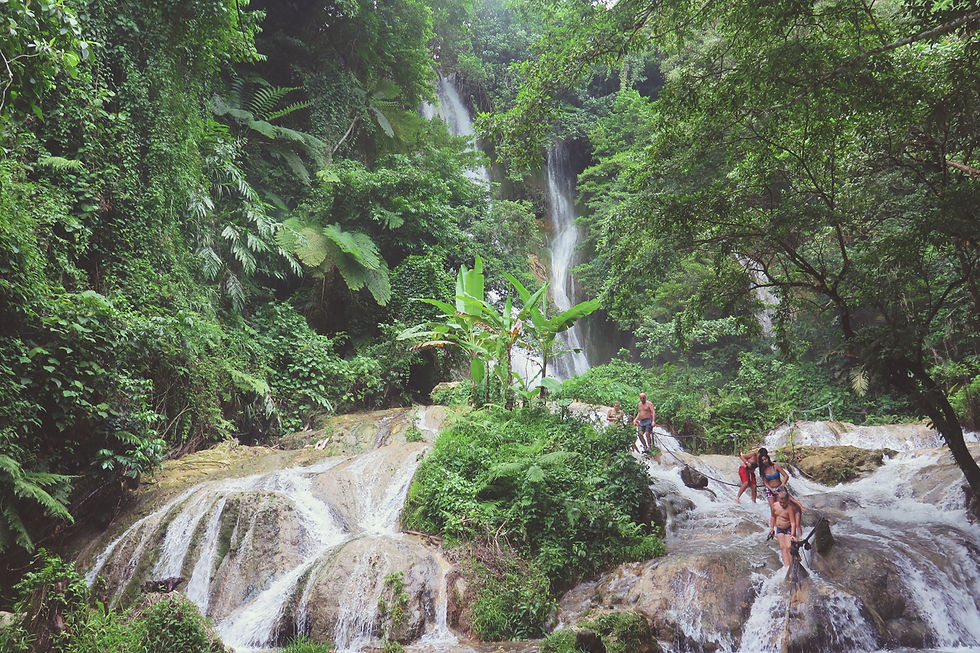
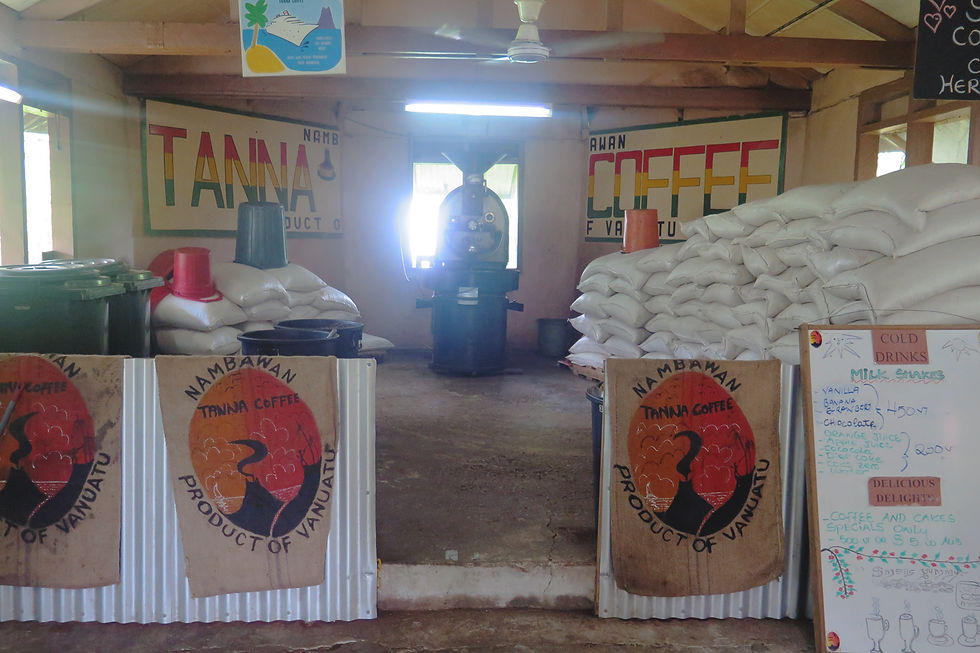
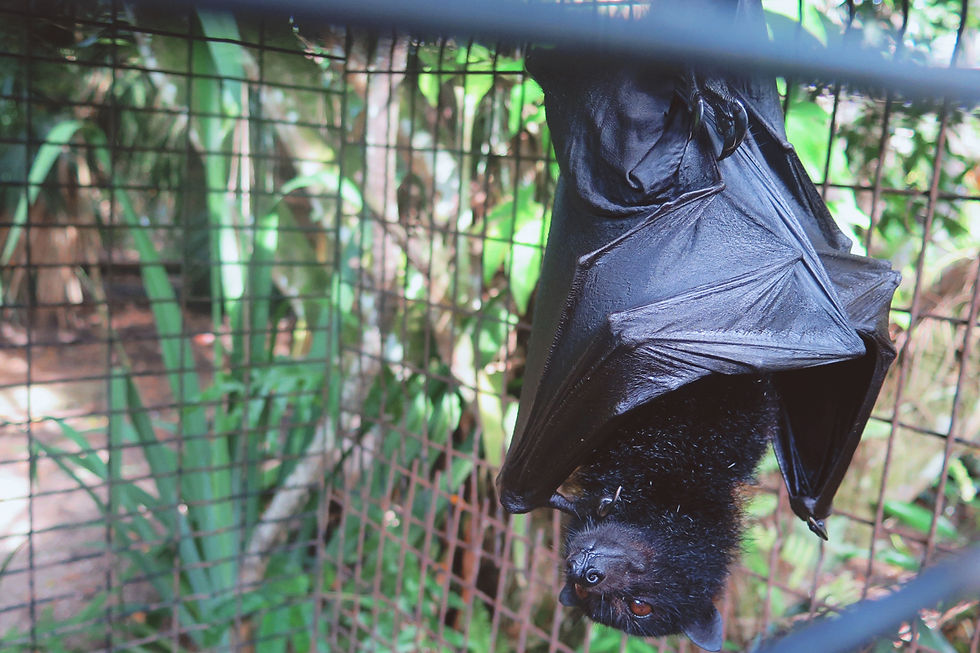

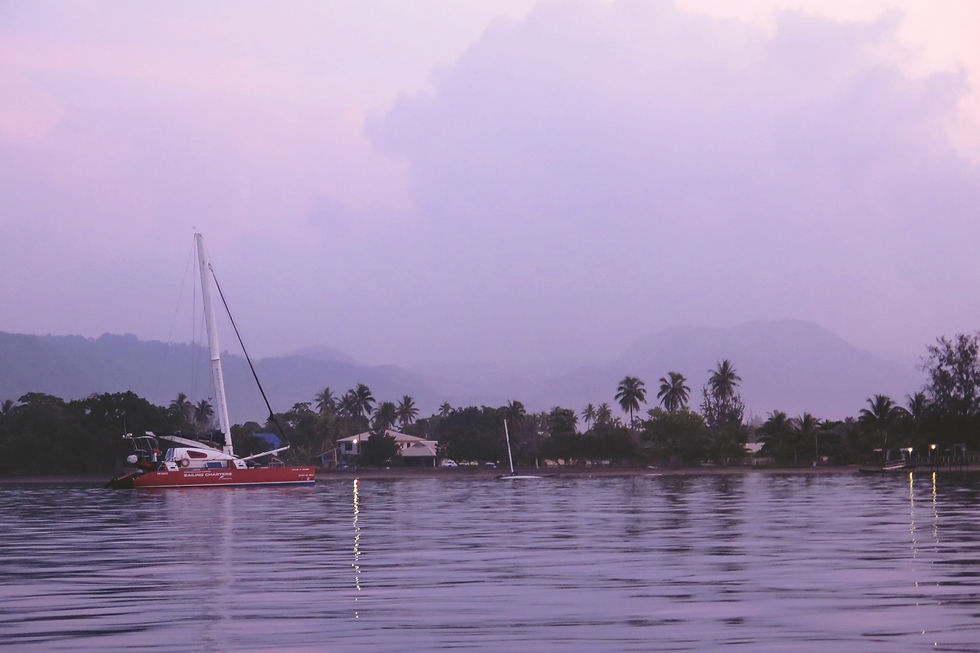
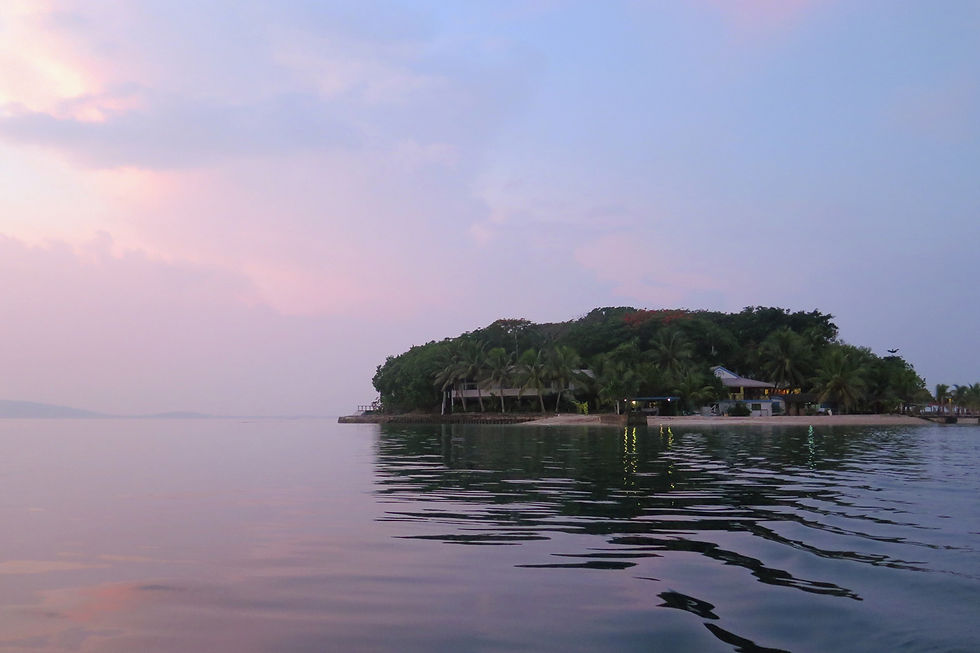
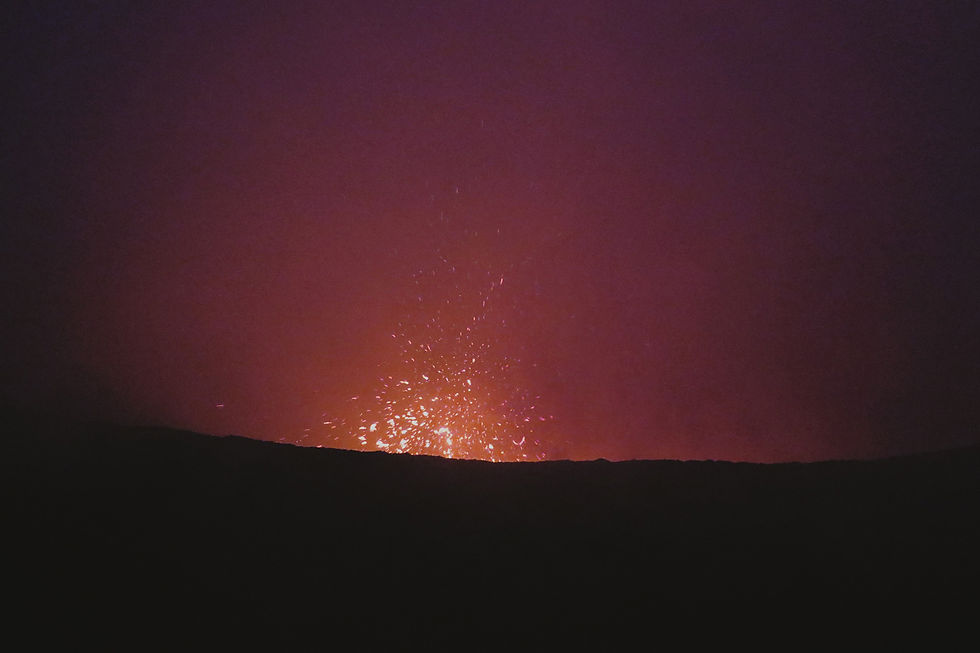

If you have heard of Vanuatu before, it was probably for Pentecost Island known as the spiritual birthplace of bungee jumping. Between April and June every year, local men perform the land diving ritual called nanggol to celebrate yam harvest. Men jump off from wooden towers about 20-30 metres tall, with two tree vines wrapped around the ankles. No other safety equipment is used. While the ceremony is believed to ensure a generous harvest, it also symbolises a rite of passage for boys once they have been circumcised at the age of 7-8. Boys jump off lower platforms in the presence of his elders. After completing the dive, they are accepted into manhood. Watch this clip to see what it is like.
Since a trip to Pentecost wasn't really an option, I had to opt for some local spots. A short car ride away from Hideaway Island is Mele Cascades, a beautiful 35m waterfall with a series of clear aquamarine pools, hidden caves, and natural slides. It is such a tranquil place that I was tempted to stay there for the whole day, but I had to keep going. Nearby is also Tanna Coffee Factory where you can watch the roasting process while sipping on a strong fresh brew. As a big coffee enthusiast, I really enjoyed this spot. The final stop on this impromptu tour was The Secret Gardens, a nice place to learn about Vanuatu history and culture as well flora and fauna, but overall a pretty standard touristy place.

I could not fly all the way to Vanuatu and not make it to Tanna island, even if it meant selling a kidney (kidding... maybe). I book a 2-day tour to Mt Yasur with Air Vanuatu, which included flights, accommodation at a local resort, and an excursion to the volcano. I was absolutely thrilled and ready to go! Having a very early flight turned out to be a blessing in disguise - hands down it was one of the most beautiful sunrises I have ever seen (see picture above). The sky and water around Hideaway were some incredible shades of pink and purple, so the photo hardly does justice to that show. At the airport, I was surprised to see so many people. Even though Vanuatu is a small country - it is roughly 3 times smaller than the Netherlands - inter-island travel is expensive, and very few locals can afford it.
If Efate Island has any hint of urban development, Tanna is as rural as it gets. It feels incredibly serene and refreshing. That is, before you get in a 4x4. Driving through the island on the way to Mt Yasur is a bit of a bum-numbing adventure on rugged terrain. Passing villages and countryside, all the while waving at the families and children, we had no indication of how close to our destination we were. Your biggest clue is in the scenery - once the dirt starts looking ashier, you know you are getting there. Finally, there it was - one of the most active volcanoes in the world!
At the bottom of the volcano is a small postbox in case you fancy sending one more postcard. Mail collected from here receives a special Mount Yasur postmark. Perhaps not surprisingly, this is said to be the world's only postbox on the slopes of an active volcano. Another round of applause for whoever thought of this.
The climb to the 361m high summit is no more than 15 minutes of steep uphill hiking. Standing atop the summit rim you feel the earth quake and rumble beneath your feet. Very few things come close to this experience! And here was the pitfall I did not take into account - the weather (you thought I'd know better after New Zealand!). I was on Tanna on a particularly humid day and it had rained the day before, so when we reached the top of the volcano we couldn't even see the glow of the lava, the smoke and clouds were too thick. Since it was an overnight tour, we were going to wait until darkness anyway, but the weather was getting worse and it eventually rained. Naturally, I was really bummed: you are standing just metres away, rocks spew and spout from below, and that is about it. But patience is a virtue. After about 2 hours, as the sun was setting down, the air cleared up a bit we could finally see clusters of molten lava. I completely lost it, so the picture above is the only decent one I managed to take. Here is what it actually looks like:
It is believed that Mt Yasur has been continuously erupting for 800 continuous years. Some say that Captain Cook saw the light from the summit and decided explored the islands.

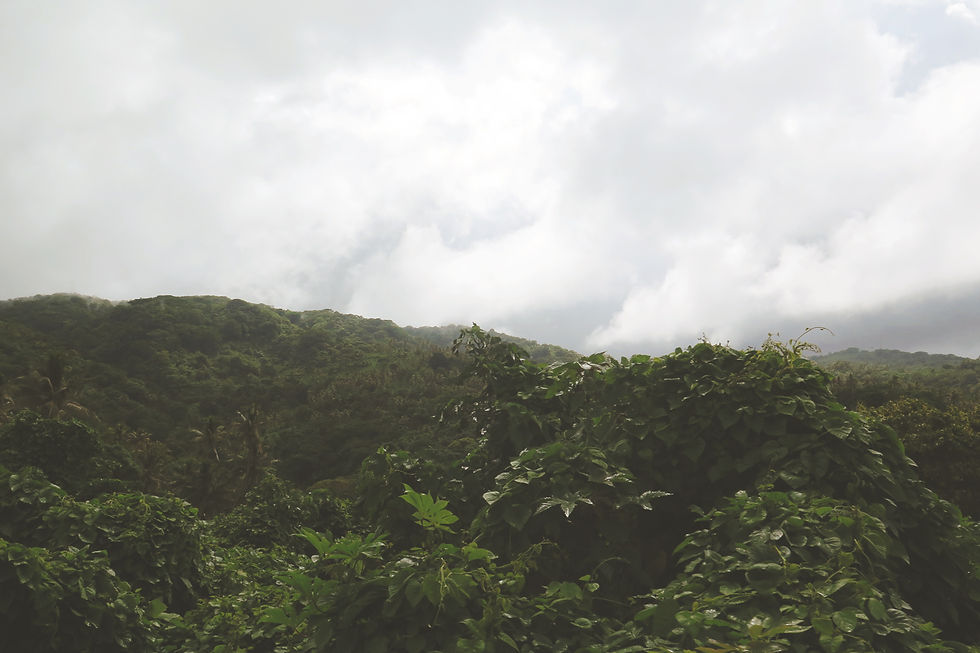


The day after my volcano visit I went on a tour to a banyan tree. Yes, just a tree. And yes, the tour is another tourist ripoff, but I justified it to myself with being unable to rent a car (still no driver's license). Banyan trees are evergreen and grow up and out, so after some years, it’s hard to tell where the tree begins or ends and it kind of looks like a jungle on its own. The circumference of this particular tree is over 100 m.
I was the only person on the tour so the driver took me around Tanna to visit some villages and learn about local people. It would be a shame to pass up an opportunity to ask him more about the headline that turned the world's heads to this island nation. Back in 2006, Vanuatu topped the Happy Planet Index and happiness has become a part of the national brand. How did this tropical place, whose GDP per capita is more than 20 times smaller than that of neighbouring Australia, rank first in the index?
The answer is, locals are self-sustainable and life is simple. They seem to accept that what you’ve got is what you’ve got — and that’s all there is to it. Vanuatu has been consistently in peace despite the multicultural society, colonial past, and unpredictable cyclones. Let's take a look at how the country gained its independence from France and the UK in 1980. The people reclaimed their islands from the colonisers, but village chiefs had not owned their land that they could not remember the boundaries of their territories. As a result, land disputes have been doing for the past decades which on one hand, makes it unclear where you can go and whose permission you need to see. On the other hand, it promotes tight-knit communities that discuss all their matters together and prevents ripping the country apart. Foreigners still cannot legally own Vanuatu land - they are only allowed to lease it from the chiefs for a max of 75 years.
Tight-knit communities mean that everybody knows each other and visits neighbouring villages (an average village is about 2,000 people). Inter-village marriages are not uncommon. People tend to stay on the island and only move to Port Vila if there is a good job offer. Overall, the lifestyle is still very traditional: when not guiding tours, my driver normally keeps himself busy with farming, looking after his pigs, fishing. Even though Christianity is prevalent and people go to church on Sunday, they still adhere to the ancient beliefs. You would not know what century it is right away if it wasn't for the solar panels which cover roofs of the huts. Locals still wash their clothes in the ocean, entertain themselves with surfing and football, and live according to the village rules.
'OK,' you might say, 'but that sort of sounds like the Gambia and Gambians are not happy.' True. Both nations are poor, have limited employment opportunities, and lack national health provision. Yet Vanuatu's poverty is nothing like the Gambia's. Here, clean water is readily available from rain, freshwater rivers, and waterfalls. Then they the volcanic soil so fertile that you could drop a plastic bag on the ground and it would sprout. And did I mention the coastline that stretches out for thousands of kilometres? You can have delicious lobster for breakfast, lunch, and dinner 7 days a week if you fancy. Ni-Vanuatu do not really need to work: what bother if the essentials are already available at no cost? You simply do not need the money to live happily here.
My driver did raise a concern that, even though the islanders are happy people now, things will be changing soon. Why? Because the modern western life is slowly but surely creeping in.
I think the tour wasn't that big a rip-off after all.

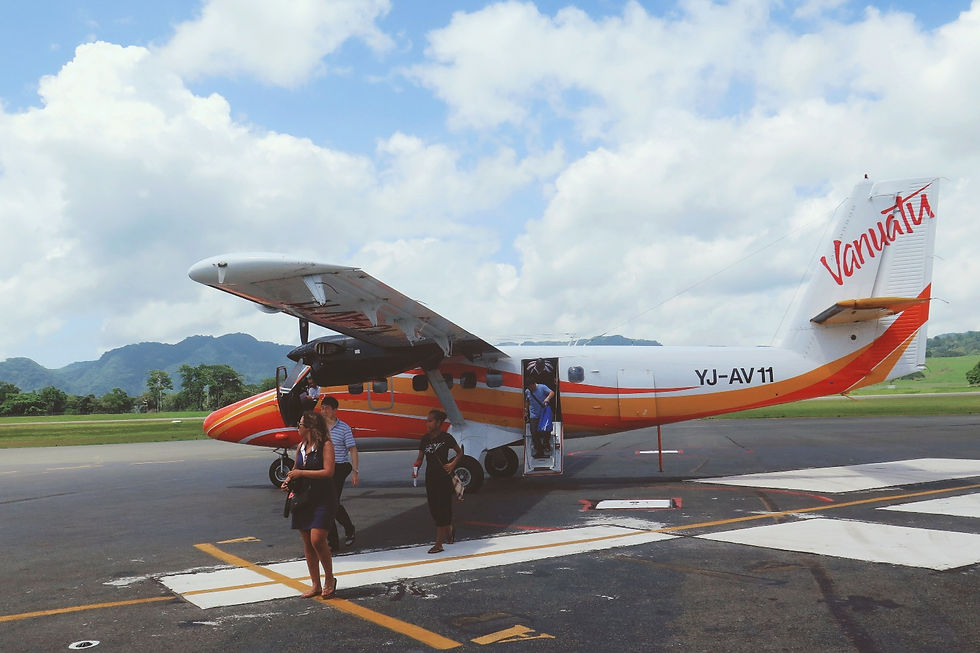

And that was a wrap! I left Tanna Island on the smallest aircraft ever and the next day, I took off to New Caledonia.
P.S. On March 14th, just a month after I left the islands, Vanuatu was slammed by a category 5 cyclone that resulted in severe damages . It was the most destructive cyclone to hit the nation in living memory but the recovery was well under way within the year.





